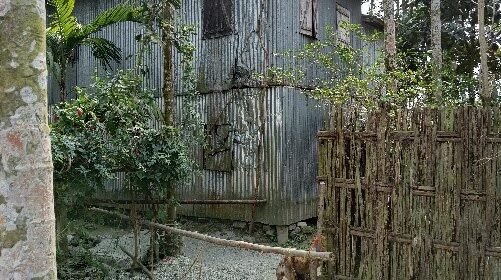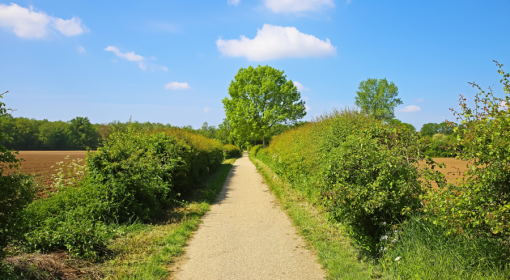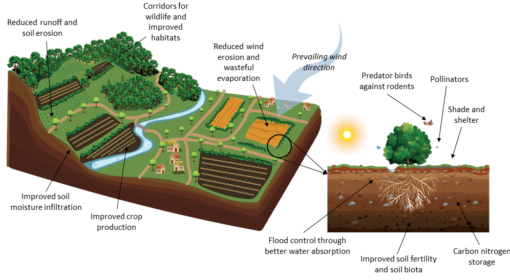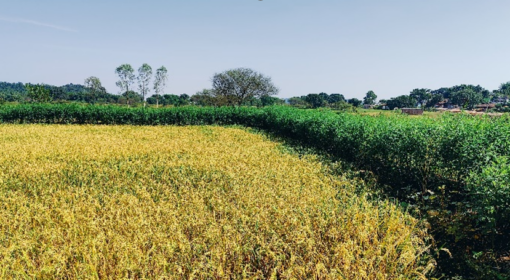Introduction
By Ilja Keukenkamp
This blog is the second part of a series of blogs on the potential of hedges as green corridors. To understand the challenges in agriculture and role of hedges, please refer to the first blog, available here.
Hedges, a seemingly inconspicuous landscape feature have the potential to add a lot of value to a landscape on multiple levels; microclimate, soil health, water recharge and reuse, biodiversity and income for the people that maintain them. In this blog, we understand how hedges tie into local conditions and challenges present in and around a small village called Kumarpara in North Bengal India.

Kumarpara is located 15 kilometres north of Cooch Behar located in the Alipurduar district, West Bengal, India. Receiving around 3000mm of rain a year, the agriculture in this area is dominated by rain-fed paddy production for the sustenance of tribal communities living there.
When traveling through Kumarpara, one of the first things that strikes out, is that nearly all the fields lay barren, giving cows and goats ample space to roam freely. Because of free roaming cattle, which is one of the most prominent challenges faced by the farmers, they are hesitant to plant crops in fear of having their crops eaten. If a farmer decides to plant another crop than paddy, in the winter season, then they would have to protect the crop with expensive (and not always functioning) fences that are constructed from bamboo and netting. Not many farmers have the means to afford these measures, and they are not a definite solution.
Another concern was the low soil fertility and poor agricultural practices performed by the farmers. The soil type in the Kumarpara region consists of a course loamy soil, which is in theory very favourable for farmland. However, due to the over-use of chemical fertilizers over the past 30 odd years, farmers have seen a decline in soil life, and have become even more dependent on chemical fertilizers.
What can hedges do?
In these situations, hedges can provide an innovative yet simple solution.
For thousands of years, hedges have, amongst many other functions, marked land and plot boundaries and kept cattle from straying to where they shouldn’t, and have done so very effectively (Wolton, 1999). Hedges have the potential to fulfil the same role in India, and, as hedges have many other beneficial characteristics, can supplement the agricultural landscape in other ways as well. Hedges as a barrier can, when strategically placed, prevent any free-roaming cattle from entering agricultural plots.

Hedges however, are no plug and play landscape feature. When establishing hedges the first years, until they lose their vulnerability from droughts and cattle, they need to be managed and protected carefully. This can be done by protecting all the newly planted hedges with fencing, or by keeping all the cattle in the region in pens near home. Neither options are easy, but the latter does prevent the need for large investments in fencing.
Hedges can also help by increasing the amount of biomass available for agricultural production. By planting hedges in the vicinity of agricultural activities, biomass can be generated which can potentially lead to a higher organic matter content in the soil. In India specifically in tribal areas, it is a common practice to extract biomass from nearby forests in order to create organic inputs for mulching and/or composting activities. However, due to the decline in forest cover as well as forest laws, this practice has gradually disappeared. Hedges, in such cases, have the potential to fulfil the role that the forest plays, whilst removing the need for people to enter and disturb forest in order to have access to the biomass.
Learnings and way ahead:
Hedges should not be seen as an isolated approach but in a way be looked at though a broader landscape regeneration approach. By adopting a holistic approach where hedges can play a valuable role, we can tie organic farming, increased crop cultivation and a more regulated form of livestock farming together.
Farmers are willing to change their current, unsustainable, method of farming where their dependence on chemical inputs is high and monocropping is practiced,. Farmers realise and understand that their current way of farming isn’t sustainable and the returns that they get on their activities are also not remunerative. Several projects have been initiated by NGOs working in that region to increase the use of agricultural land throughout the year. Farmers are eager and enthusiastic to learn about good agricultural practices and to change their current way of farming, however, lack of and access to knowledge is a serious issue. Considering the potential of hedges and considering the willingness of farmers to adopt new and sustainable agricultural practices, brings a lot of hope for a stable agricultural future in Kumarpara.
Prepared as part of Agricultural Transition through Productive Biodiversity and Nature-Based Solutions Project.



